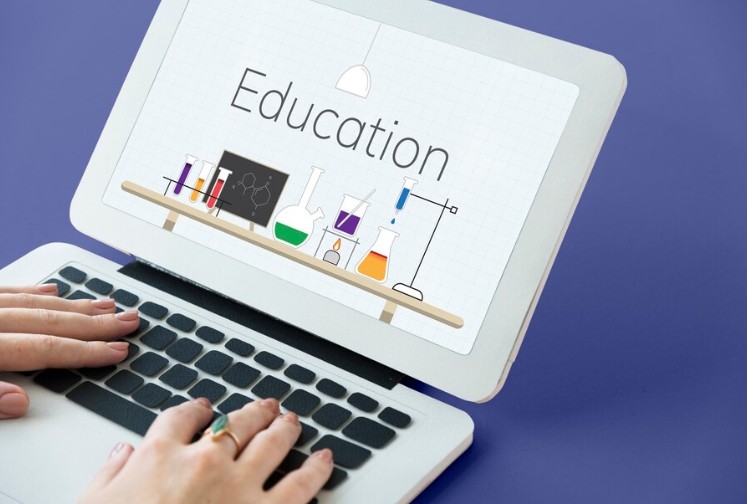
Education has evolved into a more potent innovation for learners around the globe because learners of all ages can use a single resource to access information and build new skills. From recorded lectures to sophisticated virtual classrooms, the entire learning process is no longer confined to traditional physical locations. One timeless aspect which remains constant is the significance of visuals in learning. In the digital world, the role of visuals is further pronounced as learners are able to effectively grasp, engage and interact with concepts through aid of visuals.

Importance Of Visual Aids In A Digital Classroom
Humans are inclined to process visuals. In fact, they are likely to utilize images over text, which means that visuals have the upperhand. Research indicates people can process images approximately sixty thousand times quicker than text. That’s quite an advantage for the learning sector. In education, infographics, diagrams, videos, animations and images serve to engage learners and enhance outcomes in a tremendous way. In relation to e-learning, visuals assist in exemplifying dry topics, elucidating powerful abstract ideas, demonstrating relationships and enable deeper understanding of concepts.
Visuals break the monotony of dense blocks of text, making content more user-friendly and less daunting. For instance, cell biology is an intimidating scientific subject, but cell diagrams or short explainer videos assisting operational theory of a cell enable students to grasp concepts effectively.
Given the volume of digital media circulating over the internet today, including images in WebP, PNG, JPG formats, having tools that allow fast file conversion is valuable. Websites such as webptojpghero.com allow for image conversion and effortless incorporation into learning materials, eliminating the need for specialized knowledge.
Improving Interaction and Motivation
Online learning presents unique hurdles when it comes to fostering engagement. The absence of physical interaction and a tangible classroom can result in a dip in focus and motivation. These issues can be addressed by the use of visuals such as well designed graphics, video explanations and even interactive elements like Clickable charts or Drag-and-Drop exercises.
Aside from eliciting positive responses from learners, visuals can ignite curiosity. Captivating image or video can serve as a “crutch” for engaging the learner and getting their attention fixed at the very start of a lesson. Even in brief flashes, emotions can help facilitate in the learners’ involvement or motivation to learn more.
To illustrate, emotions can be soaked into visual storytelling, images or animations that are utilized to tell a story. Learners appreciate the content more and focus on it more deeply as it resonates with them emotionally which helps them intellectually and they tend to retain the information more robustly.

Assisting Recall and Understanding
For many learners, complex concepts can often be difficult for learners to fully understand, and this is where visuals come in best. Assisting with graphs and charts during a text-based lesson greatly aid in helping learners get a deeper understanding of what is being communicated and cover topics that would otherwise be hard to explain.
Consider learning about volcano eruptions, a written description is useful, however, a cross-sectional animation depicting magma movement and pressure is self-explanatory. Students can witness causative factors in real time and much more effectively avoid any confusion while reinforcing understating.
Retention also improves when visuals are utilized in a proper manner. Research indicates a stark contrast in remembering information visually and through reading. Learners tend to remember about 80% of what they see compared to only 20% of what they read. Hence, when educational content is created with carefully crafted visuals, it becomes easier to remember.

Aiding Various Learning Techniques
Every single learner has their own unique way of processing information. Some prefer reading step-by-step guides, while others prefer doing the tasks with watching. Especially for the visual and tactile learners, supporting visuals assist in reading the content, while working and interacting with it.
Learning gaps also pose challenges, and especially for learners with language learning difficulties, visuals become a great tool for following along. Breaking the boundaries of language, images and icons can be universal emblems to convey messages. This is very beneficial in global online classrooms with different linguistic learners from all around the world.
Aiding learners with learning difficulties, visuals become helpful. For example, students who suffer from dyslexia might benefit more from diagrams than big blocks of text. Having the right mixture of visuals and text creates proper balance to ensure learners have equal opportunities to succeed regardless of their learning disabilities.
Fostering Engagement and Imagination
Learners don’t have to stay passive during online learning sessions. The best learning environments are those that foster creativity and encourage active participation from the learners. With visuals, students can be motivated to navigate, experiment, and even develop their own content.
For instance, students can now create digital posters, infographics, mind maps, and even visual notes through various online platforms. Such activities do enhance the enjoyment of learning but also require deeper processing of the material for the students who must figure out how to visually present the information.
These virtual activities also enable the learner to experience hands-on learning through tools such as 3D Anatomy or virtual Chemistry labs. Not only are these activities enjoyable, but they also allow learners to apply practical work in their theoretical knowledge which in turn will allow them to make stronger connections and have a deeper understanding.
Visuals and the Future of Online Learning
Revolution in education comes with new innovations every now and then, and is aided with visuals. Just like it is the case now, virtual reality and augmented reality have also paved their root into the mainstream education world. Have a look at how stunning the future of education looks. Imagine trying to learn ancient cavemen societies while taking a stroll through ancient bolted ruins, or even attempting to learn medicine through a virtual surgery simulator. All of these examples are designed with imagination that rely on intricate visual designs, and instead focus on learning rather than education.
Even simpler tools that are currently present will be driven towards accessibility, engagement, and clarity. Every educator will prioritize creating tailor made content first strategies for learners ensuring that visuals are well integrated as students are more likely to perform better academically. That is not all, and designers and developers of diverse learning platforms will shift their emphasis towards visually appealing interfaces to provide learners with effortless, sophisticated, and enjoyable education.
All in all, and as the need for visuals increases; there is always a demand for tools that enable the modification, optimization, image based content creation, and conversion. Services such as WebP to JPG Hero will help educators and students by taking care of the technical aspects of preparing visual content.
Conclusion
In online learning, visuals are not optional add-ons; they are crucial components. Helps learners understand better, makes retention easier, accommodates different learner types, and improves the overall learning experience. The increasing use of online classrooms means that the future will see even more advanced methods of knowledge sharing powered by visuals. Visuals transform learning for the better, whether they are diagrams, animations, or complete virtual reality environments.